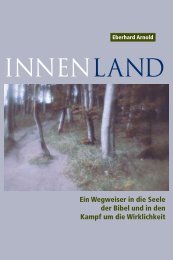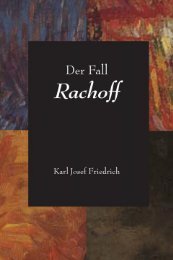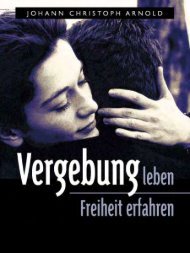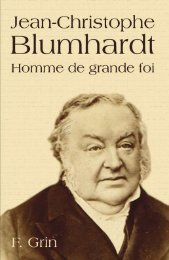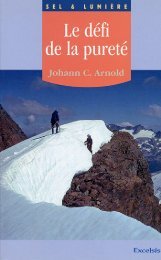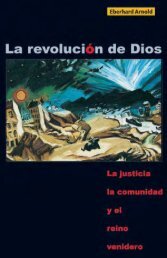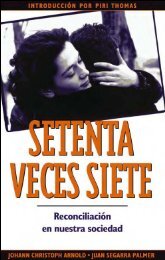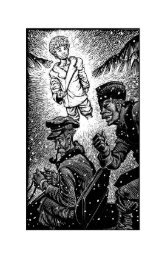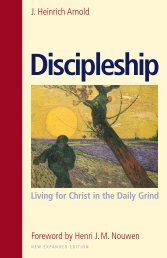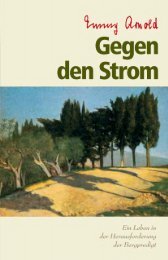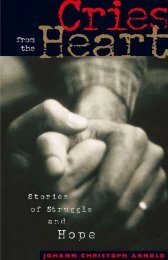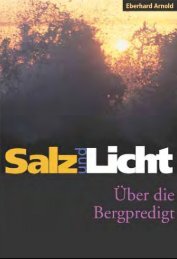Against the Wind: Eberhard Arnold and the Bruderhof - Plough
Against the Wind: Eberhard Arnold and the Bruderhof - Plough
Against the Wind: Eberhard Arnold and the Bruderhof - Plough
You also want an ePaper? Increase the reach of your titles
YUMPU automatically turns print PDFs into web optimized ePapers that Google loves.
<strong>Against</strong> <strong>the</strong> <strong>Wind</strong><br />
21 The Sannerz “Statement of Faith.” Judging by <strong>the</strong> circumstances, this statement was formulated by<br />
<strong>Eberhard</strong>; cf. Geschichtsb<strong>and</strong>, vol. IV, bk. 1, no. 43.<br />
22 Until <strong>the</strong> middle of 1921, when <strong>the</strong> community began to school its own children, Emy-Margret, Hardy,<br />
<strong>and</strong> Heinrich attended <strong>the</strong> public elementary school in <strong>the</strong> village of Sannerz.<br />
23 Cf. chap. 12, Distinguished Friends. The contact between <strong>Eberhard</strong> <strong>Arnold</strong> <strong>and</strong> Kees Boeke almost<br />
completely evaporated after <strong>the</strong> “Christian Bro<strong>the</strong>rhood” in Bilthoven disb<strong>and</strong>ed in 1926 under<br />
circumstances very similar to those in Sannerz in 1922. Subsequently Kees Boeke gave up pacifism, <strong>the</strong><br />
Christian ideal of community <strong>and</strong>, finally, his faith. In 1933 his express wish was to be “an educational<br />
reformer <strong>and</strong> nothing more.”<br />
24 Das Neue Werk, no. 3 ( June 25, 1922); cf. Kees Boeke in Wat wil libertair onderwijs? [What is <strong>the</strong> aim<br />
of unencumbered education?] (1905): “The children must grow up to be individuals with <strong>the</strong>ir own<br />
wills, full of initiative, to be people with strong characers, filled with distaste for superficialities.”<br />
25 <strong>Eberhard</strong> <strong>Arnold</strong> to Siegfried Muschter, November 3, 1920, BA. 223<br />
26 Cf. Gustav L<strong>and</strong>auer, Aufruf zum Sozialismus, 154: “Scattered here <strong>and</strong> <strong>the</strong>re among all our desolation<br />
are people who are living as children, <strong>and</strong> faith <strong>and</strong> certainty are alive in every one of <strong>the</strong>m…” This<br />
passage is heavily underlined in <strong>Eberhard</strong>’s copy.<br />
27 In “Aufruf für unsere Kinderarbeit” [Appeal for our work with children], Geschichtsb<strong>and</strong>, vol. IV, bk. 2,<br />
no. 3a.<br />
28 <strong>Eberhard</strong> <strong>Arnold</strong>, “Die innerste Wesenheit unseres Werdens” [The innermost essence of our growth],<br />
unpublished manuscript, (May 1935), 22, BA; cf. <strong>Eberhard</strong> <strong>Arnold</strong>, “Unser Weg zur Erziehung” [Our<br />
approach to education], Die Wegwarte (Apr. 1927), no. 7, 111.<br />
29 Cf. <strong>Eberhard</strong> <strong>Arnold</strong>, “Unser Weg zur Erziehung.”<br />
30 German title, in full: Sonnenlieder für Menschheitsfriede und Gottesgemeinschaft [Songs of <strong>the</strong> sun:<br />
for <strong>the</strong> peace of humanity <strong>and</strong> God’s community].<br />
31 German song title: “Brüder, zur Sonne, zur Freiheit.” In Sonnenlieder <strong>the</strong> original closing words of <strong>the</strong><br />
third verse, “Holy is <strong>the</strong> last fight,” are replaced by a new concluding sentence, composed by Erich Mohr:<br />
“Holy is <strong>the</strong> power of love.”<br />
32 Carl Franklin <strong>Arnold</strong> to <strong>Eberhard</strong> <strong>Arnold</strong>, May 18, 1924, BA.<br />
33 In <strong>the</strong> summer of 1921 Heinrich Euler had conducted <strong>the</strong> first baptism in Sannerz; cf. Gegen den<br />
Strom.<br />
34 Held at <strong>the</strong> Breitewitzer Mühle, near Gräfenhainichen, Saxony. The Mennonite <strong>and</strong> Baptist preacher<br />
Hans Klassen had built up <strong>the</strong> Neusonnefeld community settlement <strong>the</strong>re after <strong>the</strong> original settlement<br />
near Sonnefeld in Thuringia collapsed because of internal problems. <strong>Eberhard</strong> <strong>and</strong> Emmy knew Hans<br />
<strong>and</strong> Wally Klassen even before <strong>the</strong> war; cf. chap. 4, n. 18.<br />
35 His topic: <strong>the</strong> Sermon on <strong>the</strong> Mount; cf. Rose Kaiser in “Early memories of Sannerz <strong>and</strong> <strong>the</strong> Rhön<br />
<strong>Bruderhof</strong>,” unpublished manuscript, BA.<br />
36 Probably from Wolkan, Die Hutterer: Österreichische Wiedertäufer und Kommunisten in Amerika<br />
[The Hutterites: Austrian Anabaptists <strong>and</strong> communitarians in America]. J.G. Ewert had drawn<br />
<strong>Eberhard</strong>’s attention to this book in 1921. Ano<strong>the</strong>r source familiar to <strong>Eberhard</strong> at that time was Loserth’s<br />
Kommunismus der Mährischen Wiedertäufer [The communal life of <strong>the</strong> Moravian Anabaptists].<br />
<strong>Eberhard</strong> only heard of o<strong>the</strong>r Hutterite sources through Robert Friedmann in 1926; cf. Die Wegwarte,<br />
nos. 8 & 9, 1925.<br />
37 According to notation by Gertrud Dalgas; cf. Geschichtsb<strong>and</strong>, vol. IV, bk. 3, no. 13.




